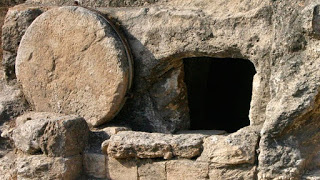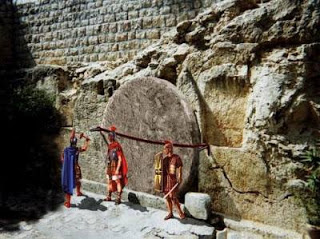As Zechariah prophesied (“Strike the shepherd, and the sheep will be scattered,” cf. Zechariah 13:7), the apostles abandoned the Master at the time of His arrest and trial—an event carried out under questionable legality by temple officials and Roman soldiers, led to Him by Judas Iscariot.
Peter, more courageous than the others, followed at a distance, while most of the disciples went hiding. John eventually returned and remained with Jesus until His final moments at the cross. But even the one who had been called “The Rock”—on whom the nascent Church would be built—did not hold out long. After denying any association with Jesus, Peter withdrew, later weeping bitterly over his betrayal: “But Peter said, ‘Woman, I do not know him.’” (Luke 22:57)
Eventually, Peter returned to the others. Yet fear gripped them all. They stayed behind locked doors until that first day of the week, when Jesus appeared to them in the upper room where they were hiding:
On the evening of that same day, the first day of the week, the doors were locked in the place where the disciples were, for fear of the Jews. Jesus came and stood in their midst and said to them, ‘Peace be with you.’ (John 20:19)
Can we reasonably believe that these same men—who had shown themselves to be fearful and demoralized—suddenly found the strength to steal the body of their Teacher, their Friend, their Lord?
Would they have dared to face a Roman guard detachment, or had the audacity to break a seal that bore the signet of Caesar’s representative?
On Friday, they had seen their beloved Teacher murdered in the most brutal way possible—the very man for whom they had left everything, with whom they had lived and learned for more than three years. Their hearts were shattered, their spirits broken. In such a state, how could they have mustered the courage and resolve to approach the tomb, confronted an armed guard, and carried out a bold theft?
While Jesus was being interrogated, Peter was in the courtyard outside Caiaphas’ house. The uproar had drawn crowds of onlookers and agitators, shouting for punishment. When a servant woman confronted Peter, saying he had been with Jesus, he denied it: “He denied it before them all, saying, ‘I do not know what you are talking about.’” (Matthew 26:70)
If Peter, one of Jesus’ closest companions, was afraid of a maidservant, how can we believe that he later summoned the courage to confront the Roman guard—men known for their brutality and efficiency?
These soldiers did not flinch as they drove nails into human flesh. They had no hesitation placing a crown of thorns on a man who had just been scourged. They obeyed without question when ordered to lash a defenseless prisoner with the flagrum taxillatum[1], a whip designed to tear skin and muscle—stopping only when death was near.
These were the very men who stood between the disciples and the tomb. Were they overcome by a group of untrained, frightened men?
The record tells us otherwise. The guards survived. On the day of the resurrection, they were unharmed, and instead of defending their actions, they went to the chief priests: “Some of the guards went into the city and reported to the chief priests all that had happened.” (Matthew 28:11)
If there had been a confrontation, if the disciples had fought and defeated them, the guards would not have gone to the religious authorities seeking cover. They would have been summoned for punishment or interrogated by Roman officials. Instead, they accepted a bribe, and a story was crafted to cover their failure.
[1]The instrument used for flagellation was the flagrum taxillatum, which consisted of a short wooden handle to which were attached three leather straps, each approximately twenty inches long. At the ends of each strap were two elongated lead balls, tightly bound together. In some cases, instead of lead balls, the straps bore talli—the astragalus (ankle bone) of a ram. However, the version with lead balls was the most used.
According to Hebrew law, the maximum number of lashes allowed was forty. To avoid accidentally exceeding this limit, the Jews would typically administer only thirty-nine lashes. However, Jesus was flogged by Roman soldiers under Roman authority. Therefore, he was scourged more roman—according to Roman custom—which placed no legal limit on the number of lashes. The only requirement was that the condemned remain alive.
There were two reasons for this: first, so that Jesus could be presented to the public in a pitiable state, in hopes of eliciting sympathy (as was Pilate’s intention); and second, in the event of a death sentence, to ensure that he would survive the journey to the execution site and be crucified alive, as Roman law required.







